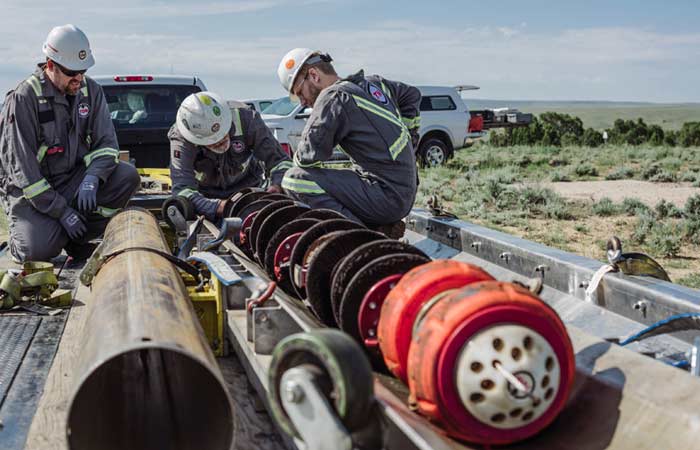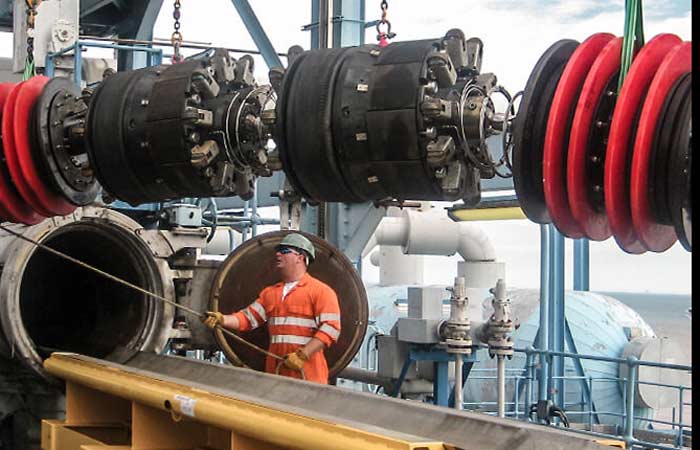Pipelines are usually systems consisting of various fittings, pipes, pumps, booster stations, storage structures attached to the pipes, intake and outlet facilities among other things. The booster stations will usually be needed for long pipelines. Those that need more than just one pumping station.
It is designated to transport fluids like natural gas, oil, or some petroleum-based commodities over a long distance and is always often underground. It’s a vital part of modern civilization being used for water movement.
Pipeline Intervention Services

These channels usually cost more compared to roads. It takes some time and often requires several survey plans and research to be conducted to come up with a good plan that will address societal, environmental, developmental, and safety considerations that are necessary for building a pipeline. You can check out RJ Stacey to get more information about this.
However, they help in reducing the cost. This is based on direct or shorter routes when compared to roads.
What are pipeline intervention services?
These are activities executed to ensure a pipeline works perfectly. It involves a lot of maintenance practices and repairs. This is required as it helps to bring order and reduce or prevent any downtime among other risks.
Spotting a pipeline problem.
-
Pressure change
Many businesses rely on a good and strong pressure of the fluid. Whether that fluid is water or gas, it really doesn’t matter as the most important thing is that they need this pressure to be constant to continue their work. A bad shaped pipe can affect the work of restaurants, laundry services, car washing shops, etc.
Many people rely on cleaners to solve the situation but they could widen the crack and create a bigger problem hence increasing the cost of service. It’s important to contact professions so as to assess the damage and fix it promptly.
-
Low-quality water
The most common thing that people notice is the quality of water, this is because we use water almost all day long. Because of the size and complexity of these systems, they can be damaged. If this happens it’s best to call for help so as to avoid contaminating and corrupting the water furthermore.
-
Water puddles appear
The appearance of water puddles can be a sign of very severe damage. It can present as a health hazard to everyone around them. They can also get in touch with electricity and create a very unsafe environment.
Signs of a cracked pipe include increased levels of humidity and puddles on the floors. If this problem is not fixed immediately it will weaken the whole system.
Read More
- 3 Plumbing Disasters That Need Immediate Professional Attention
- The Benefits of Soft Water
- How Do You Fix a Bathtub that won’t Drain?
Methods of Pipeline Intervention.
1. Hot tapping
This is also referred to as under-pressure drilling, it’s one of the methods you can use when making branches existing vessels or pipes. These connections are usually made without any need to use the current pressure in use inside of the pipes.
This method employs a machine for tapping or a fully bored valve. Either of these machines has a nozzle or a split tee welded onto the pressurized system.
Some of the advantages of using this method are:
- It doesn’t allow hazardous gases and chemicals to escape.
- Allows the services to stay in use.
- Helps in avoiding any unnecessary planning and design.
If the piping is containing any combustible substance or anything that can decompose when subjected to heat, this might not be the best method to use.
2. Line stoppling
It’s a technique used in the stopping of a section of the pipe to prevent the flow of water or gas. In the situations where the downstream needs to be supplied by the medium, you can use the method to bypass the system. You will be required to cut a small part of the line from the primary pipe.
This allows for the alteration and repair of the pipe to go on without the need for you to stop. The method can apply to any type of pipeline.

Advantages of using this method include:
- Services to the consumer of sensitive services and process industries are maintained.
- Contamination or the loss of gas or fluid doesn’t occur.
- No harmful product was released.
- Eliminate the need for bulk transfer and storage of dangerous fluids.
- No time is wasted when draining the system.
- Fire protection not affected.
3. Inline freezing of the pipe
This method is used for the isolation of some ducts but just temporarily. The technique is considered safe, economical, and effective for modification among other pipeline jobs. The materials used are often subjected to a cryogenic temperature and works even best when aluminum alloys are introduced. You can also use cesium, selenium, or chlorine among others.
4. Valve insertion
Sometimes, stopping the flow within the system can result in disruption in the operation of some companies. Situations like this can be undesirable, especially when most people are looking for solutions to continue the services while trying to fix any problems simultaneously. The valve insertion method can be put to use when adding offtakes, new lines, and branches among others. Of course, this is applied when hot tapping proves not to be good.
Some advantages can include cost reduction on the repairs, installations taking less amount of time, and the flow remaining online regardless of whether the system is under pressure. To prevent the shutdown from happening, the valves will be introduced and therefore any repairs will now be done through the valves. Click here to read more.
Conclusion
If you really know the importance of pipelines, probably you will also know where they need to be kept in a good shape almost all the time. They are usually laid down in different areas with different weather conditions. This is one of the things that usually cause them to deteriorate and eventually break down with time.
In other areas with a lot of people, they can get vandalized and the metals sold to the recycling companies as scrap. These are just a few reasons why there should always be pipeline intervention services to do routine checks on the channels. This will help in determining or detecting possible defects or mechanical problems and getting them fixed before they develop any further.